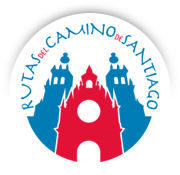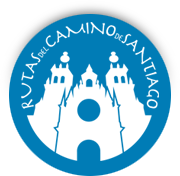
French Way
Of all the Camino de Santiago routes this Jacobean route is the busiest, as almost all of those which pass through Spain end up coniciding with this at some point or other.
In Spain it begins in Roncesvalles (Navarra), and passes through importa
In Spain it begins in Roncesvalles (Navarra), and passes through importa
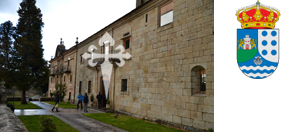
SARRIá
:This town in the province of Lugo has a population of 13,350. Among it's monumental heritage is the Fortress tower 'Torre Fortaleza de los Marqueses de Sarria', only surviving part of the fortress and monastery of the Magdalena built in the XIIIth century. In all, there are 20 Romanesque churches within the municipality.
Thanks to the Camino de Santiago hospitals, hermitages, bridges and inns emerge. These attract institutions of social assistance such as the 'Madalenos' in Sarria, and the Templars in Santo Estevo de Barbadelo.
A perfect starting point in the Camino in which to experience Galicia's rich culture, gastronomy and history.
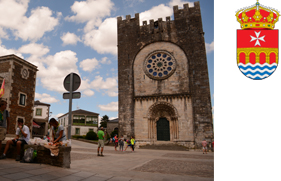
PORTOMARíN
:The Villa of Portomarín (Lugo) was born and grew alongside a roman bridge over the River Miño (rebuilt in the middle ages) and the Camino de Santiago.
In 1962 when the Belesar reservoir was built the village of Portomarín was moved to the neighbouring Monte do Cristo. On this site were rebuilt some of the most important monuments, both civil and religious,such as the romanesque church of Saint Nicolas, built by the Hospitallers of St. John of Jerusalem, whose stones were marked and reconstructed in the present site.
When the reservoir's level drops there are still visible remains of the old buildings, the jetty and the primitive bridge.
At the moment it has a population of 1654. Despite it's being a small place it provides all the necessary services in order to attend to a large number of pilgrims who stay overnight on their way to Santiago.

PALAS DE REI
:Palas de Rei, in the province of Lugo, has a population of 3613. Along with the other towns established along the Camino de Santiago, it's history and heritage amaze the pilgrims and reflect the noble past of these lands, conserving remains of fortresses, towers, castles, as well as a few stately homes (pazo) and manor houses. Amongst the most relevant buildings are: the ancient Towerhouse of Filgueira; Fontecuberta Towerhouse; the Pazo of Laia.
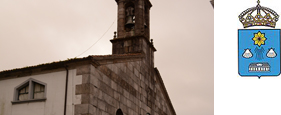
ARZUA
:In Arzúa we enter the province of Coruña. It is known as “land of cheese” in reference to the cheese made from cow's milk with the designation of origin Arzúa-Ulloa.
A town of 6267 inhabitants, in which water has a significant presence in the form of the Iso, Mera, and Ulla rivers, and is the protagonist of the local fiestas. As well as this natural resource the town boasts a rich artistic heritage of which the Magdalena Chapel, part of a XIVth century Agustine convent which attended to pilgrims, is the most striking.
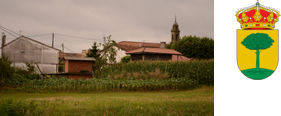
PEDROUZO
:Pedrouzo (Coruña) belongs to the council of O Pino. Alongside Monte de Gozo it has in recent years become the last stopover for pilgrims before reaching Santiago. Although to get to the centre of Pedrouzo one has to take a small detour, at 18km distance from Santiago it is perfect for a last calm stage before the Pilgrim's mass.
It's worth mentioning that the parish church of Santa Eulalia de Arca and the beautiful scenery surrounding it are ideal for recouping one's strength before completing the Camino.
Pedrouzo (Coruña) belongs to the council of O Pino. Alongside Monte de Gozo it has in recent years become the last stopover for pilgrims before reaching Santiago. Although to get to the centre of Pedrouzo one has to take a small detour, at 18km distance from Santiago it is perfect for a last calm stage before the Pilgrim's mass.
It's worth mentioning that the parish church of Santa Eulalia de Arca and the beautiful scenery surrounding it are ideal for recouping one's strength before completing the Camino.
It's worth mentioning that the parish church of Santa Eulalia de Arca and the beautiful scenery surrounding it are ideal for recouping one's strength before completing the Camino.
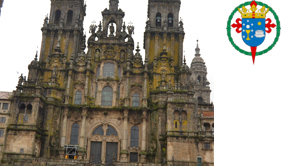
SANTIAGO DE COMPOSTELA
:The town of Santiago was born after the discovery of the tomb of the Apostle James. A mixture of legends about Roman villas, Celtic hill-forts, miraculous lights, stone boats...What history has been able to ascertain is the existance of Bishop Teodomiro de Iria Flavia, who in 814 visited the place and confirmed that here was the sepulchre of Santiago the Elder, describing the miraculous arrival of his remains at Compostela.
Little by little with the arrival of the pilgrims the route began to be called the Camino de Santiago. The French Way, the most important route to Compostela, was the main route for cultural diffusion, economic activity and political interest. Thus Santiago became the most important city of Galicia and of the northwest of the Iberian peninsula. In time Santiago became a service industry town, mainly upper education, religion and medical attention. The arrival of large numbers of students in the 1960's helped to make what Santiago is today: a dynamic centre in all spheres.
© 2014. Rutas del Camino de Santiago. All rights reserved | Legal Advice  +34 685 186 974 - +34 923 54 16 88
+34 685 186 974 - +34 923 54 16 88
 +34 685 186 974 - +34 923 54 16 88
+34 685 186 974 - +34 923 54 16 88
